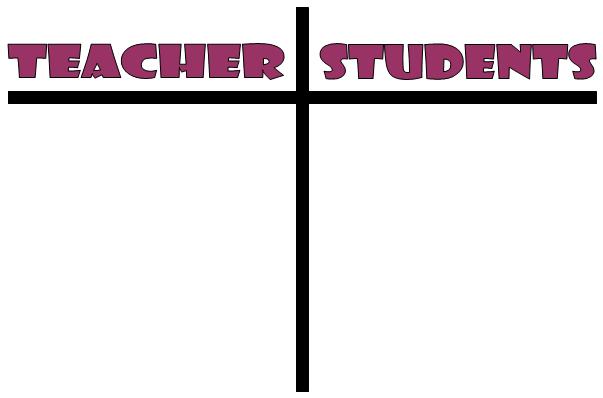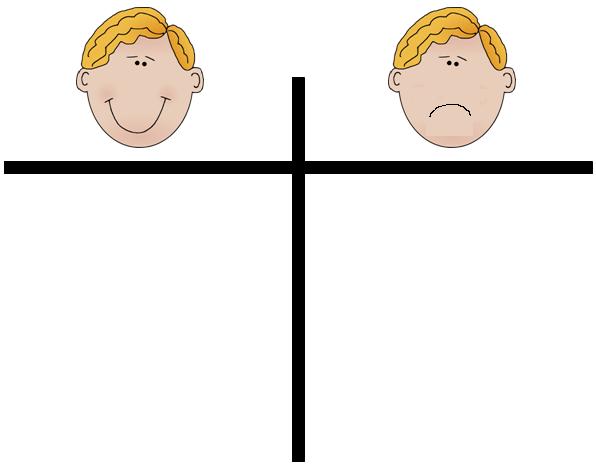Whole Brain Teaching Wednesday! The Scoreboard

The week is almost done (we don’t have school on Fridays) and I’m excited to be writing my fourth Whole Brain Teaching Wednesday post! I hope that this focus on a specific WBT strategy is helpful to those of you who are wishing to learn more about how a certain strategy may work and what my personal experience with it has been. Last week I highlighted “Mirror”, this week I would like to introduce you to the WBT strategy of “The Scoreboard”. (I realize that my introduction of these strategies are not in any specific order).
 |
|
| Scoreboard for older students (5-12): Teacher vs. Students |
“The Scoreboard” is a classroom management strategy that assists in motivating our students. We are told again and again in our education classes that a student’s motivation can affect the entire classroom environment and will affect us and the other students as well. We can tell when one of our students (or perhaps the whole class) is just not into a certain idea or activity. Maybe its the topic, maybe its the teaching style, maybe they are having an off day, or maybe its one of those days where you swear its a full-moon (it happens)!
 |
| Scoreboard for younger students (K-4): Smiley vs. Frowny |
We are not always going to be able to have all of our student’s be super-excited about our subject or a certain activity. We get that, right? Some people will just not like subject “x” no matter how hard a teacher tries. “The Scoreboard” can be a fun way of boosting our student’s motivation in the classroom. Essentially, all it is is a basic T-chart where we keep tally of positive and negative behaviours. What type of behaviours is completely up to the teacher. Using “Teach-Ok” and the student’s aren’t participating? Negative point. Morning announcements come on and everyone attentively listens? Positive point. We can award points for anything depending on what type of activity we are doing and what our expectations are. This way, even if a student doesn’t like the subject or activity, they still realize the expectations for the classroom and can be motivated by the scoreboard even if they are not motivated by the task at hand. The following describes “The Scoreboard” strategy as stated by Jeff Battle on the Whole Brain Teaching website.
One thing you must understand from the start is that you should not let the difference between the number of Student and Teacher points get greater than three. If you over reward they will stop working for it. If you let them get too far in the hole they will quit trying to win the reward. That is the reason for the +-3 rule.
Student and Teacher points will build quickly at first, but fall off as they get better at procedures.
I used “The Scoreboard” during student teaching and I did find it effective. Like Jeff mentions, I did not punish my students for receiving negative points but I did not allow them a privilege that they were working towards. For example, at the start of class we would decide as a group what type of “reward” we wanted based on what we were doing that day. Maybe it was extra time to complete an assignment or the option to work in groups as opposed to individually. If they “beat” me in “The Scoreboard” they would receive that privilege, if they didn’t I would carry out my lesson like I had originally planned. The students definitely got into it and I could tailor “The Scoreboard’s” use each day depending on our activity. Sometimes it would be based around specific WBT strategy expectations, sometimes it would be based around basic classroom procedures and sometimes both. Note, that we always talked as a class about what the expectations were for the day so everyone could be on the same page. Personally, I am not incredibly fond of creating a teacher vs. student environment in my class so I am thinking of revising this for my personal use in the future. I would like to come up with something that achieves the same effect, just not with those labels attached to it (I don’t think High School student’s would be as motivated by a happy face and sad face).
What are your thoughts?
Check out the Whole Brain Teaching website to see Chris Biffle’s instructions in context or check out Chris Biffle’s YouTube channel to see this strategy in action.
I love the scoreboard and use it daily!!! 🙂 I am your newest follower!
❤ Sandra
Sweet Times in First
sweettimesinfirst[at]gmail.com
I saw your blog post about your scoreboard! I like the idea of having a portable one and one on the main board as well.
Thank you for following 🙂
Great idea! This is a perfect time of year for this post when most teachers could use a new strategy to motivate students!
Thanks Jackie!
I might have missed this. How often do you reward/not reward them and start the gameboard all over again?
susanlulu[at]yahoo.com
Thanks!!!
Hi Susan! I am usually in a high school classroom and only have my students for one period at a time so I would reward them at the end of the class. I know some elementary students that reward at the end of the day or at the end of the class, depending on what they feel is necessary. It may depend on the age level of your students.
It can also depend on what you are working on at the time. If you are starting up a project you may have a reward be that they can pick their own partners, thus the scoreboard would end when it is time to begin that project or if you have gym as your last period in the day you may have the reward that they can go out 5 mins early so the scoreboard may go all day. It really is flexible!
Where can I get a copy of the scoreboard for the younger kids? Thanks.
susanlulu[at]yahoo.com
Susan I am emailing you out a copy right now 🙂
Of course! I just emailed a copy your way 🙂
Can you email me a copy of the scoreboard for younger kids as well? williams@madisonchristianschool.com
So excited to try many of your ideas.
Sherry, yes of course! I am sending an email your way right now 🙂
sounds wonderful, can I please get a copy of the younger kids scoreboard too 🙂 tarryn.needham[at]yahoo.com.au
Thanks,
Tarryn
Of course Tarryn! I am sending one your way right now 🙂
Could you email me a copy of the younger kids scoreboard?
aimeenolan03[at]yahoo.com
Found you through a Google search – I am a special ed. middle school teacher and would like to use the scoreboard but without it being teacher vs. students too – any ideas on alternate labels?